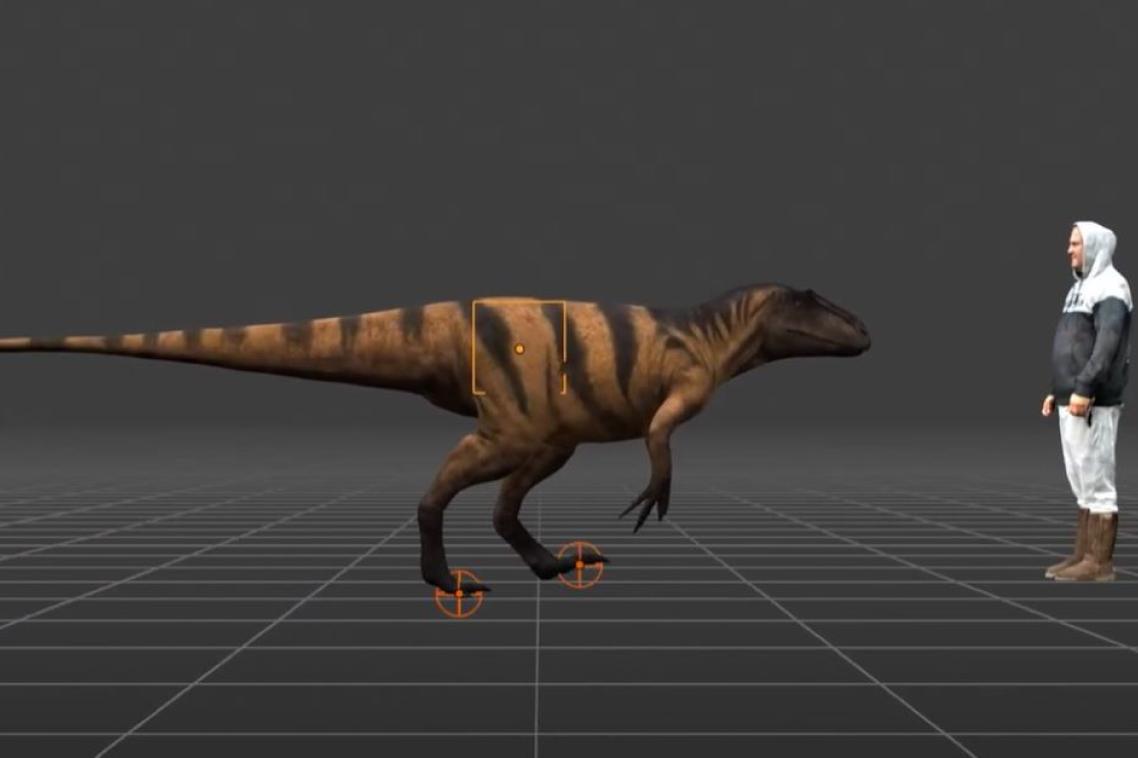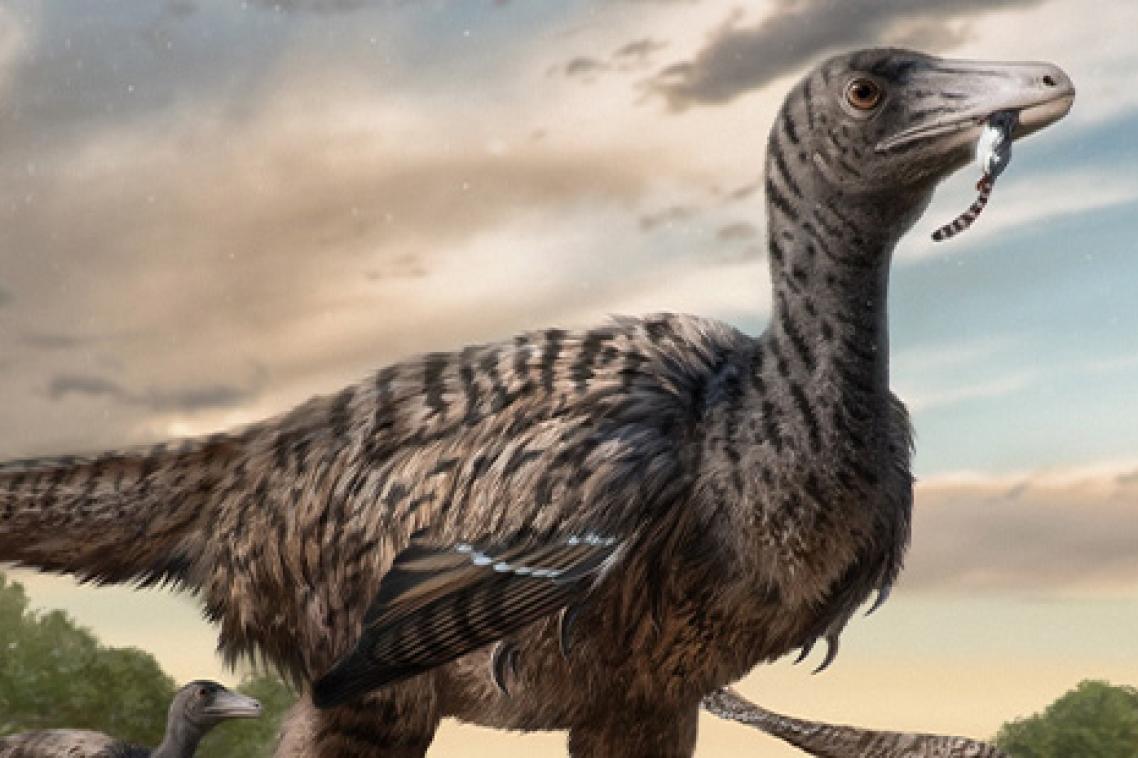Digital reconstruction reveals 80 steps of prehistoric life

An image from the reconstruction of the dinosaur's movements.
(Photo credit: Dr A Romilio )
Dr Anthony Romilio from UQ’s Dinosaur Lab analysed and reconstructed the Phoenix Trackway, the longest documented set of footprints made by a predator walking on two legs in East Asia.
“For the first time this dinosaur’s movements have been reconstructed step by step, revealing how it walked, changed pace and responded to its environment,” Dr Romilio said.
“This sequence of 80 consecutive footprints extends for 70 metres in Sichuan Province, China and is a fleeting moment frozen in stone.
“Through digital animation, we can observe that moment as it unfolded, getting unprecedented insights into the animal’s behaviour and biomechanics.”
Using trackway measurements, the research team has revealed the dinosaur walked on two legs, stood 1.13 metres tall at the hip and weighed up to 292 kilograms.
“The footprints show this dinosaur moved at a steady 5.3 km/h which is equivalent to a brisk human walk and then briefly accelerated into a light trot before returning to its regular pace,” Dr Romilio said.
“This wasn’t just a dinosaur wandering aimlessly, it was moving with purpose in a nearly perfectly straight line.”
Local folklore once attributed the footprints to a mythical phoenix, but scientific analysis reveals it was an ancient predator, similar in size to the feathered Yutyrannus which lived in northeastern China in the early Cretaceous period.
“Trackways can reveal behavioural information and stories that fossilised bones alone cannot provide,” Dr Romilio said.
“But long trackways such as this have historically been understudied due to the logistical difficulties of measuring them in detail in the field.
“Our entirely digital approach allows us to capture, interpret and preserve all the measurements and calculations of fossil track sites on computer to provide a glimpse into the dynamic life of an ancient creature.”
The study was co-authored by Dr Lida Xing of China University of Geosciences, Beijing.
The research is titled A Digital Analysis of the ‘Phoenix Trackway’ at the Hanxi Cretaceous Dinosaur Tracksite, China and is published in Geosciences.
Related articles

Dozens of 3-toed dinosaurs leave their mark in Queensland

Gigantic Jurassic raptor footprints unearthed
Media contact
UQ Communications
communications@uq.edu.au
+61 429 056 139

